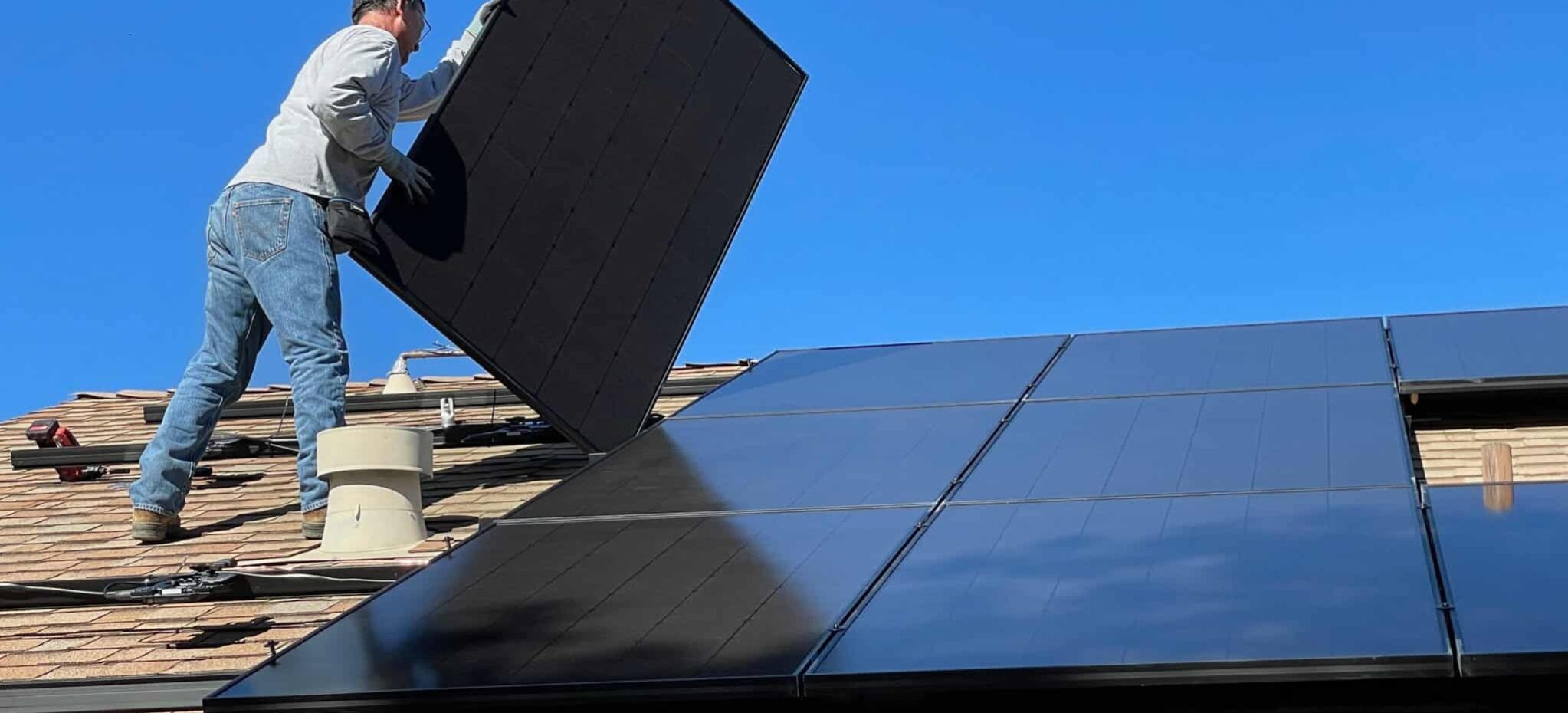When going solar, homeowners usually have a lot of questions for their suppliers. As far as these questions go, none are as frequent as: “what angle should I mount my solar panels?”. After all, the angle is what determines how much sunlight the panels will receive and, by extension, how much power they will generate.
To calculate the correct angle for your solar panels, you need to consider a couple of factors. These include the geographical location (latitude) of your home, as well as the angle of your roof.
Explaining Solar Panel Angles
The solar panel angle, also known as the tilt, is a term used to explain the vertical position of the solar system on your roof. For example, if a solar panel is lying on the ground, it has no tilt. Conversely, when it is standing upright, you can say that it is tilted at a 90° angle.
In order to receive the most sunlight, panels need to be installed at an angle that is somewhere between these two options. The exact number depends on your latitude, as well as the tilt of your roof.
How Does Latitude Affect the Necessary Solar Panel Angle?
The angle of your solar panels should increase with your latitude. In other words, the farther you are from the Equator, the bigger panel tilt you’ll need to power your home.
For example, states like Hawaii or Arizona have lower latitudes, meaning that the sun is always slightly higher in the sky. For the panels to work in states like these, their tilt needs to be low (about 20°). That way, the sun will hit them directly for at least 4 to 5 hours every day, allowing them to generate enough power.
On the other hand, states like Oregon or Minnesota are located at higher latitudes. Naturally, the sun is a bit lower in the sky during the day here, so solar panels have to be tilted at a higher angle. In most cases, this angle is somewhere between 35° and 45°.
When calculating the necessary tilt for your solar panels, providers usually use one rule of thumb. Namely, they subtract approximately 15° from your home’s latitude during the summer and add the same number to your latitude during the winter. These calculations allow installers to get the most accurate tilt average, which they can use to install your panels correctly.
If you want to get the most out of your panels, you can also install adjustable models. Such panels can be tilted at different angles based on the season. As such, they can always generate enough power for your appliances.
Does Roof Tilt Also Play an Important Role?
Although it does play a role in the effectiveness of your solar panels, the tilt of your roof is not as important as the latitude of your home.
For example, solar panels on shallow roofs receive more sunlight during the summer. On the other hand, systems on steeper roofs get more sunlight during the winter, when the sun is lower in the sky.
In other words, the discrepancies balance each other out on a yearly basis. So, both types of roofs allow panels to generate an almost equal amount of energy. Thus, you most likely won’t have to change your roof in order to install a solar system.
Final Thoughts on the Tilt of Solar Panels
The performance and overall effectiveness of solar panels indeed do depend on the tilt. To ensure that your panels are at their most efficient, your solar provider needs to adjust them based on your home’s latitude.
Luckily, reputable companies can work with a wide range of roofs and inclinations. So, they can overcome all obstacles and ensure that you get the best out of solar energy each time. Most importantly, they can make sure your panels are effective no matter where you live.
What Else to Know About Solar Energy
Can I Install Solar Panels Somewhere Other Than My Roof?
What is Solar Energy?
How Long Will it Take to Install Solar Panels?





